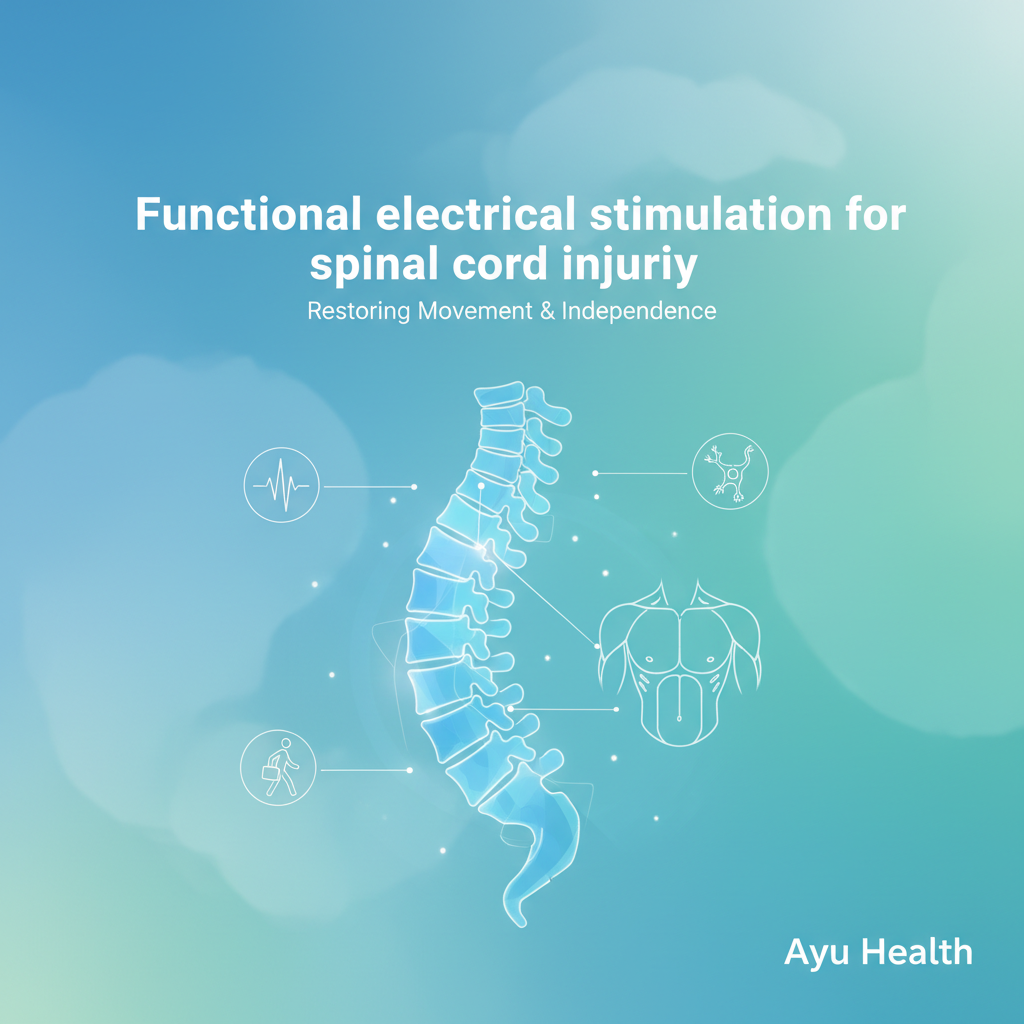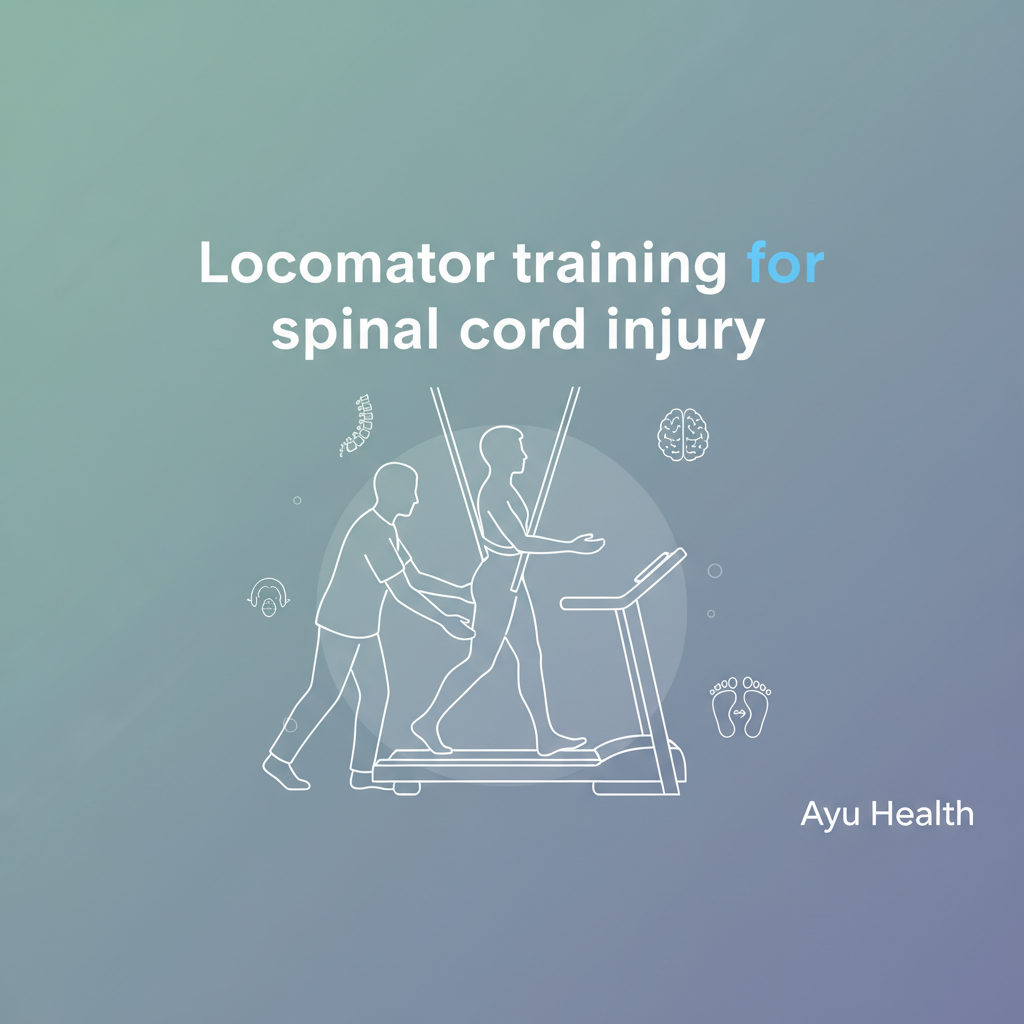What is Functional Electrical Stimulation (FES) for Spinal Cord Injury?
Functional Electrical Stimulation (FES) is a revolutionary therapy that uses electrical impulses to activate paralyzed or weakened muscles in individuals with spinal cord injuries (SCI). Imagine regaining some control over movements you thought were lost – that's the potential of FES. It's like a bridge, using electricity to bypass the damaged pathways in the spinal cord and directly stimulate the muscles.
FES works by delivering small, controlled electrical pulses to specific muscles via electrodes placed on the skin or, in some cases, implanted under the skin. These pulses cause the muscles to contract, enabling movements like lifting an arm, moving a leg for walking, or even improving bladder control. It’s not a cure for SCI, but rather a tool to improve function, strength, and overall quality of life. Regular use of FES, often combined with other therapies, can lead to significant improvements in muscle strength, endurance, and even some restoration of movement.
Key Facts:
- FES uses electrical stimulation to activate paralyzed muscles.
- It can improve movement, strength, and bodily functions.
- It's often used in conjunction with other therapies like physiotherapy.
- Both surface and implanted electrodes can be used.
- FES is not a cure, but a rehabilitation tool.
Why is Functional Electrical Stimulation for Spinal Cord Injury Performed?
FES is recommended for individuals with spinal cord injuries to address a range of challenges and improve their daily lives. Here are some key conditions and situations where doctors may recommend FES:
- Improving Walking and Standing: FES can stimulate leg muscles to enable or improve walking ability and standing balance.
- Restoring Bodily Functions: FES can aid in regaining control over bowel and bladder function.
- Reducing Muscle Spasms and Spasticity: Electrical stimulation can help relax tight muscles and reduce involuntary spasms.
- Maintaining Range of Motion: FES helps keep joints flexible and prevents stiffness.
- Improving Blood Circulation: Muscle contractions stimulated by FES improve blood flow, reducing the risk of blood clots.
- Cardiovascular Conditioning: FES can provide a form of exercise for the cardiovascular system.
- Increasing Muscle Size and Strength: Regular FES use can help prevent muscle atrophy (wasting) and even increase muscle mass.
- Improving Posture and Balance: Strengthening core muscles with FES can improve posture and balance.
- Pain Management: FES can sometimes help alleviate chronic pain associated with SCI.
- Improving Breathing: In some cases, FES can be used to stimulate respiratory muscles.
- Weight Management: By increasing muscle activity, FES can aid in weight management.
When Doctors Recommend It:
Doctors typically recommend FES after a thorough evaluation to determine if the individual is a suitable candidate. This assessment involves testing the responsiveness of muscles and nerves to electrical stimulation and considering the individual's overall health and goals. FES is often recommended when other conservative treatments have not provided sufficient improvement in function.
Preparation for Functional Electrical Stimulation for Spinal Cord Injury
Preparing for FES therapy involves several crucial steps to ensure safety and effectiveness. Here’s what you need to know:
Essential Preparation Steps:
- Medical Evaluation: Your doctor will conduct a comprehensive assessment to determine if you are a suitable candidate for FES. This includes evaluating your muscle and nerve function and discussing your medical history.
- Goal Setting: Discuss your goals with your healthcare provider. What specific functions do you hope to improve with FES? This will help tailor the treatment plan to your needs.
- Understanding the Procedure: Learn about the FES procedure, including how the electrodes are placed, how the stimulation feels, and the potential benefits and risks.
- Discuss Pre-existing Conditions: Inform your doctor about any pre-existing medical conditions, such as heart problems, skin sensitivities, or other implanted medical devices.
- Medication Review: Discuss all medications you are currently taking with your doctor.
- Skin Preparation: Keep the skin clean and dry in the areas where the electrodes will be placed. Avoid using lotions or oils on these areas before treatment.
India-Specific Tips:
- Consult with Specialists: Seek out hospitals and rehabilitation centers in India that have experience with FES therapy for SCI. Major cities like Mumbai, Delhi, Chennai, and Bangalore have specialized centers.
- Gather Medical Records: Collect all relevant medical records, including your SCI diagnosis, imaging reports, and any previous treatments you have received. This will help the FES specialist understand your condition.
- Insurance Verification: Check with your insurance provider to determine if FES therapy is covered under your policy. Understand the coverage limits and any pre-authorization requirements.
- Financial Planning: Be prepared for the costs associated with FES therapy, including the initial assessment, device costs (if applicable), and ongoing therapy sessions.
- PCPNDT Act (If Applicable): This is typically not relevant for FES preparation.
- Fasting: Fasting is generally not required unless specifically instructed by your doctor for any related tests.
What to Expect:
- Initial Assessment: The initial assessment typically takes about an hour and involves testing your muscle and nerve response to electrical stimulation.
- Treatment Plan: Your therapist will develop a personalized FES treatment plan based on your needs and goals.
- Sensations: You may experience a tingling or tapping sensation during the stimulation. The intensity can be adjusted to your comfort level.
- Regular Sessions: FES therapy typically involves regular sessions over several weeks or months to achieve optimal results.
The Functional Electrical Stimulation Procedure
The FES procedure is relatively straightforward and generally involves the following steps:
- Electrode Placement: The therapist will carefully place electrodes on your skin over the target muscles. The placement depends on the specific muscles being stimulated and the desired outcome. In some cases, implanted electrodes may be used, which requires a surgical procedure.
- Stimulator Connection: The electrodes are connected to a neuromuscular electrical stimulator unit, which is a small external box that generates electrical impulses.
- Stimulation Adjustment: The therapist will adjust the intensity and frequency of the electrical stimulation to a level that is comfortable and effective for you.
- Exercise or Activity: While the muscles are being stimulated, you will engage in specific exercises or activities, such as walking on a treadmill, cycling on a stationary bike, or performing arm movements.
- Monitoring and Adjustment: The therapist will continuously monitor your response to the stimulation and make adjustments as needed to optimize the treatment.
Duration and Comfort Level:
- Each FES session typically lasts between 30 to 60 minutes.
- The comfort level can vary depending on the individual and the intensity of the stimulation. Most people experience a mild tingling or tapping sensation, which is generally well-tolerated. It's important to communicate any discomfort to your therapist so they can adjust the stimulation accordingly.
What Happens During the Test:
During an FES session, your therapist will guide you through specific exercises or activities while the electrical stimulation is being applied. The goal is to retrain your muscles and nervous system to work together to improve function. The therapist will monitor your progress and make adjustments to the stimulation and exercises as needed.
Understanding Results
The results of FES therapy can vary depending on several factors, including the severity of the SCI, the individual's overall health, and their adherence to the treatment plan.
What Results Mean:
- Improved Muscle Strength: Increased strength in the stimulated muscles, allowing for more functional movement.
- Improved Walking Ability: Increased walking speed, endurance, and improved gait pattern.
- Improved Bodily Functions: Better control over bowel and bladder function.
- Reduced Spasticity: Decreased muscle stiffness and involuntary spasms.
- Improved Cardiovascular Health: Better heart function and circulation.
- Increased Muscle Mass: Prevention of muscle atrophy and even some muscle growth.
- Improved Posture and Balance: Enhanced stability and reduced risk of falls.
- Pain Reduction: Decreased chronic pain associated with SCI.
Next Steps:
After completing a course of FES therapy, your healthcare provider will assess your progress and determine the next steps. This may involve:
- Continued FES Therapy: Ongoing FES sessions to maintain and further improve function.
- Home-Based FES: Using a portable FES device at home to continue therapy independently.
- Integration with Other Therapies: Combining FES with other rehabilitation therapies, such as physical therapy, occupational therapy, and exercise programs.
- Lifestyle Modifications: Making changes to your lifestyle, such as adopting a healthy diet and exercise routine, to support your overall health and well-being.
Costs in India
The cost of FES therapy in India can vary depending on several factors, including the type of FES device used, the location of the treatment center, and the number of therapy sessions required.
Price Range in ₹ (Tier-1, Tier-2 Cities):
- Initial Assessment: ₹5,000 - ₹10,000
- FES Device (Surface Electrodes): ₹20,000 - ₹50,000
- FES Device (Implanted Electrodes): ₹15,00,000 - ₹25,00,000 (This is a very rough estimate and can vary significantly)
- Therapy Sessions (per session): ₹1,000 - ₹3,000
These are approximate costs and can vary significantly based on the specific clinic, technology used, and location. Tier-1 cities (Mumbai, Delhi, Bangalore) may have higher costs compared to Tier-2 cities.
Government vs. Private:
- Government Hospitals: FES therapy may be available at a subsidized cost in government hospitals, but access may be limited, and there may be long waiting lists.
- Private Hospitals and Rehabilitation Centers: Private facilities offer more comprehensive FES programs, but the costs are generally higher.
Insurance Tips:
- Check Coverage: Contact your health insurance provider to determine if FES therapy is covered under your policy.
- Pre-Authorization: Many insurance companies require pre-authorization for FES therapy.
- Medical Necessity: Ensure that your doctor documents the medical necessity of FES therapy to support your insurance claim.
- Explore Government Schemes: Investigate any government schemes or programs that may provide financial assistance for SCI treatment and rehabilitation.
How Ayu Helps
Ayu can help you manage your FES therapy journey by providing a secure and convenient platform to:
- Store Results Digitally: Upload and store your FES assessment reports, therapy progress notes, and other medical documents securely in one place.
- Track Over Time: Monitor your progress over time by tracking key metrics, such as muscle strength, walking ability, and pain levels.
- Share via QR Code: Easily share your medical information with your healthcare providers by generating a QR code.
FAQ
Q: Is FES a cure for spinal cord injury? A: No, FES is not a cure for SCI. It is a rehabilitation tool that can help improve function, strength, and overall quality of life.
Q: Is FES painful? A: Most people experience a mild tingling or tapping sensation during FES, which is generally well-tolerated. The intensity of the stimulation can be adjusted to your comfort level.
Q: How long does FES therapy take to show results? A: The time it takes to see results from FES therapy can vary depending on the individual and the severity of their SCI. Some people may experience improvements within a few weeks, while others may take several months.
Q: Who is not a good candidate for FES? A: FES may not be suitable for individuals with certain medical conditions, such as cancer, implanted electrical devices (like pacemakers), osteomyelitis, epilepsy, pregnancy, osteoporosis, or active DVT.
Q: Are there any risks associated with FES? A: Risks can include skin irritation, infection at the electrode site, discomfort from the electrical impulses, and in rare cases, injuries to the skin or joints.
Q: How often do I need to undergo FES therapy? A: The frequency of FES therapy sessions will depend on your individual needs and goals. Typically, sessions are conducted several times a week.
Q: Can I do FES therapy at home? A: Yes, some portable FES devices are available for home use. However, it is important to receive proper training from a qualified therapist before using FES at home.
Q: Where can I find qualified FES therapists in India? A: You can find qualified FES therapists at major hospitals and rehabilitation centers specializing in SCI treatment in cities like Mumbai, Delhi, Chennai, and Bangalore. Ask your doctor for recommendations.



